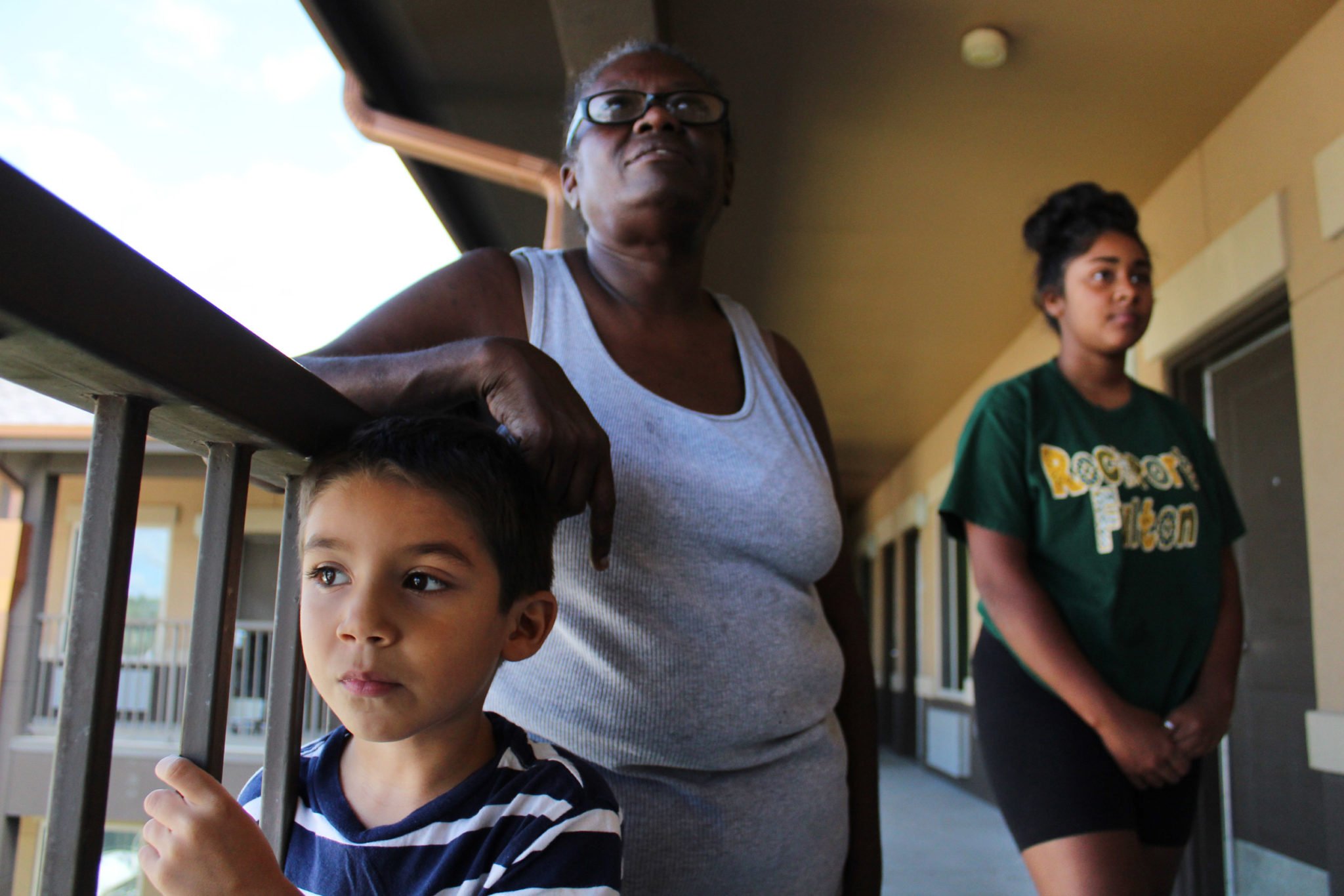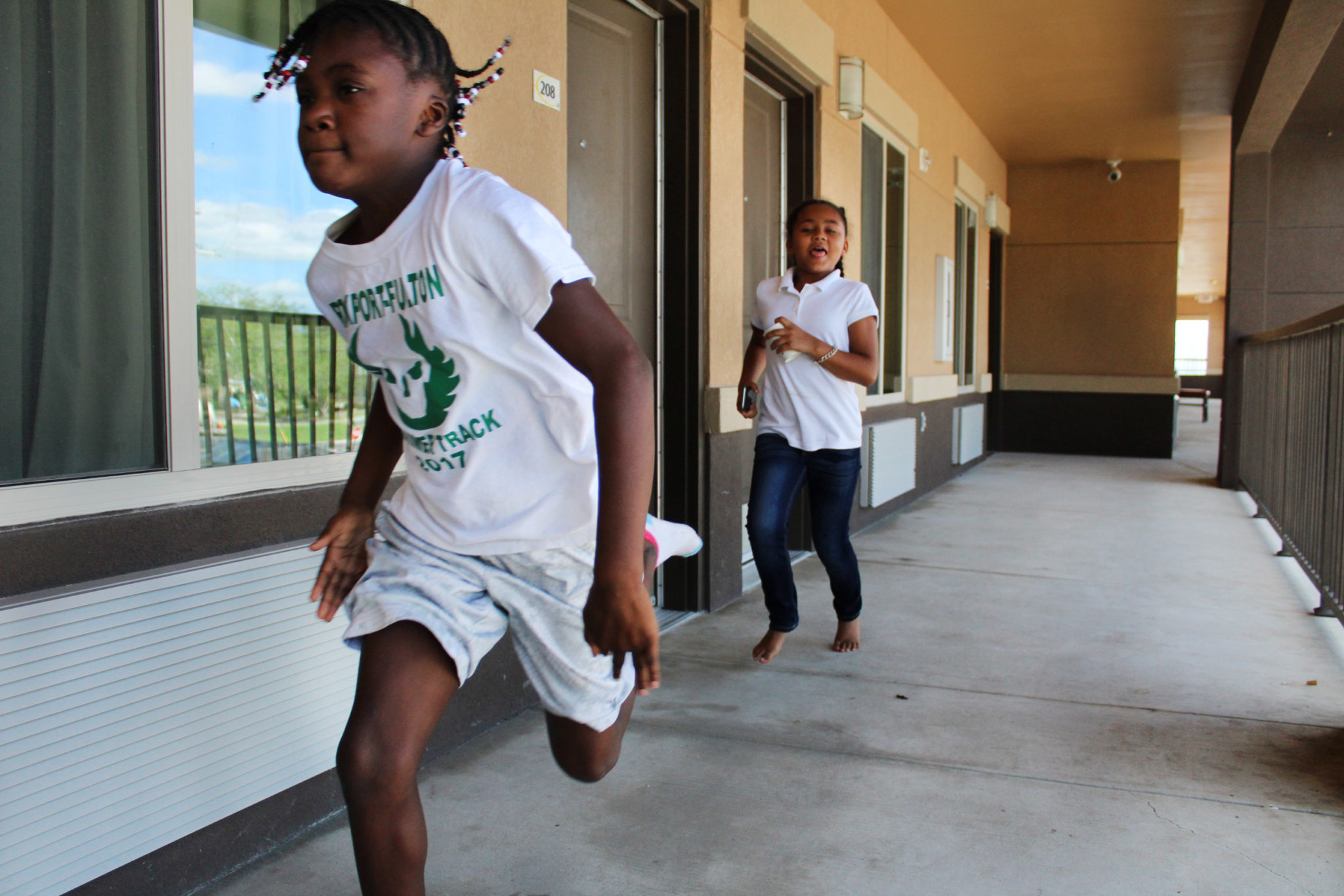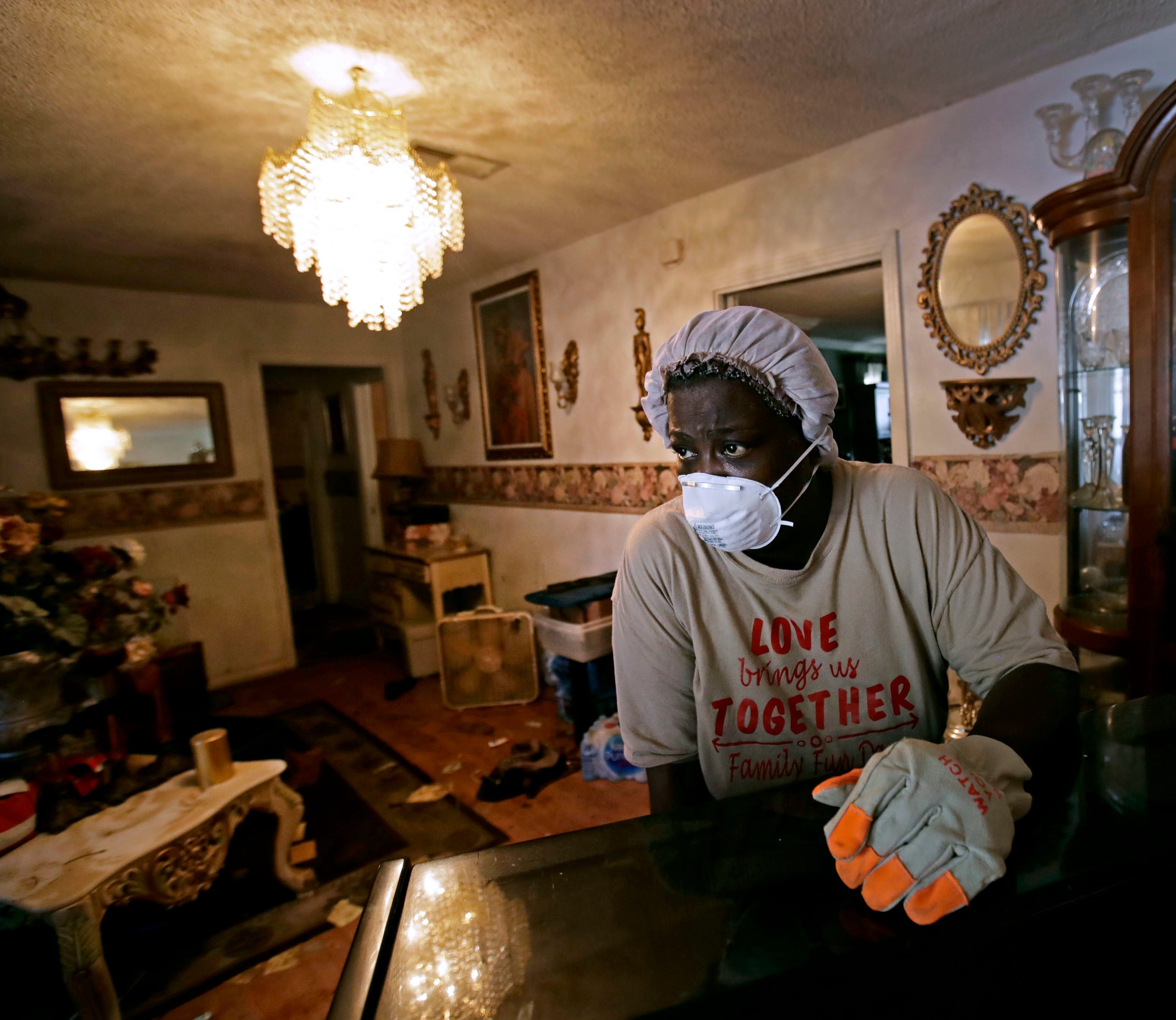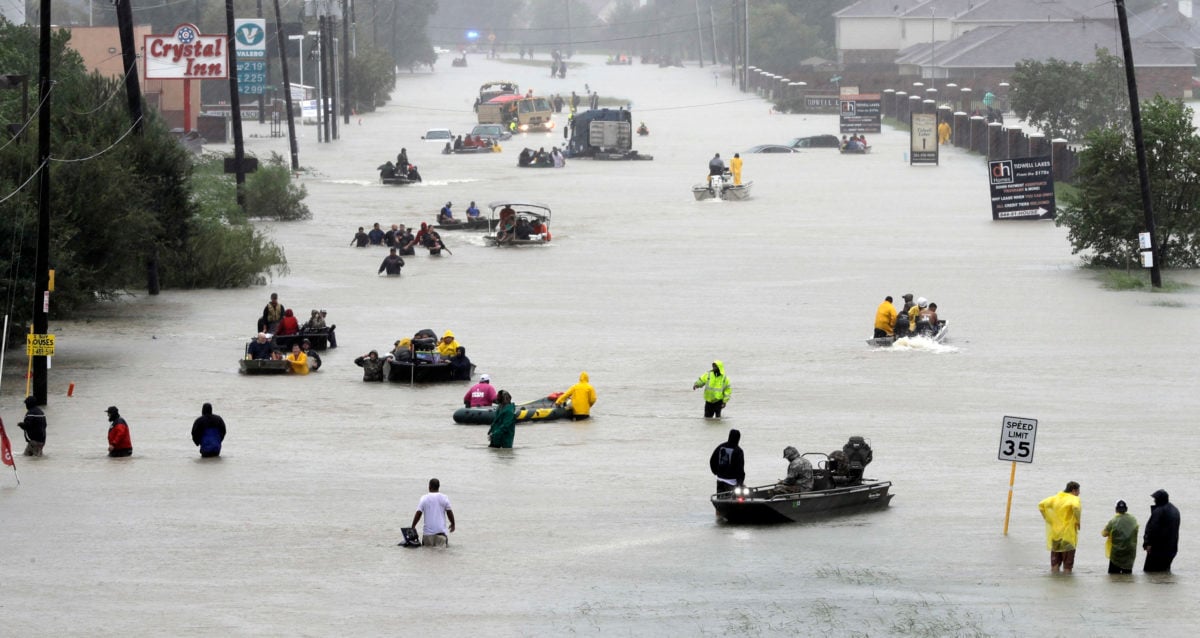
In Karnes City, Hurricane Evacuees Play the ‘Waiting Game’
“So far, [FEMA has] been helping us,” Tracy Douglas said. “But after September 26, I don’t know what I’m going to do.”


Last week, Tracy Douglas, a 57-year-old grandmother of five, didn’t plan on living in Karnes City for the foreseeable future. But that was before Hurricane Harvey laid waste to the beachside community of Rockport, taking along with it the cozy apartment she shared with her husband. Now Karnes City is a temporary home to Douglas, her husband and one of her sisters, as well as nieces, nephews and grandchildren.
The only other time Douglas remembers being in Karnes City, she said, was when she was a child, fleeing another hurricane with her family. That may be because the rural town of 3,350 — which sits about an hour southeast of San Antonio — is positioned at the crossroads of two Texas hurricane evacuation routes: State Highway 239 and U.S. 181. The town now plays host to residents of some of Texas’ devastated coastal communities.
More than 30,000 people are now staying in 230 shelters across Texas, Federal Emergency Management Agency (FEMA) officials said Wednesday. About 1,800 more have been relocated from shelters to hotels and motels.
On Tuesday, from the second-story landing of the Super 8 in Karnes City, Douglas brags on her 8-year-old granddaughter Ta’nia, who she says typically places first in her Rockport elementary school’s summer track and field events. “You want to see me run?” Ta’nia asks, before breaking into a sprint and beating her cousin, 9-year-old Kiriah, in a foot race. The kids go back to their rooms, and Douglas is suddenly fighting back tears.

“They’re just all cooped up here,” she says. “My fear is that they’re going to start fussing and fighting with one another.” Her grandson Zacarias, 6, who has enormous brown eyes, has been asking if he’ll have to stay at the Super 8 “forever.”
“It’s a waiting game for us,” Douglas says. “At night time I get sad. I start going downhill.”
There are other evacuees at the motel, too. “Just a few doors down there’s a couple from Port Aransas,” Douglas said. “Downstairs there’s a family from Port Lavaca and I think one from Refugio. Matter of fact, there’s a loan officer from the bank I go to down there,” gesturing to the room directly below us.
In Port Aransas, the hurricane wreaked havoc on the town’s marina and harbor. In Refugio, the storm tossed trailer homes into the air. In Rockport, a high school was flooded and roofs and walls were torn from homes.
Since the storm hit on Friday, evacuees from those and other affected communities have fled north, finding lodging where they can. Early this week, affordable rooms south of San Antonio were sparse. Some evacuees, including Douglas, are being reimbursed for their motel cost through FEMA’s disaster shelter assistance program.
FEMA will pay for Douglas to stay in the Super 8 (or other approved housing) until September 26, she said. After that, the federal government may give her a trailer, but there’s no guarantee. “So far, they’ve been helping us,” she said. “But after September 26, I don’t know what I’m going to do.” For the time being, she and her family are living at the Super 8, which is better than the motel in Killeen where they first stayed last weekend. There were syringes littering the ground and drug deals being made out in the open, Douglas said.
In Karnes City, “I’m still not as close to home as I want to be, but I’m closer,” she said.


